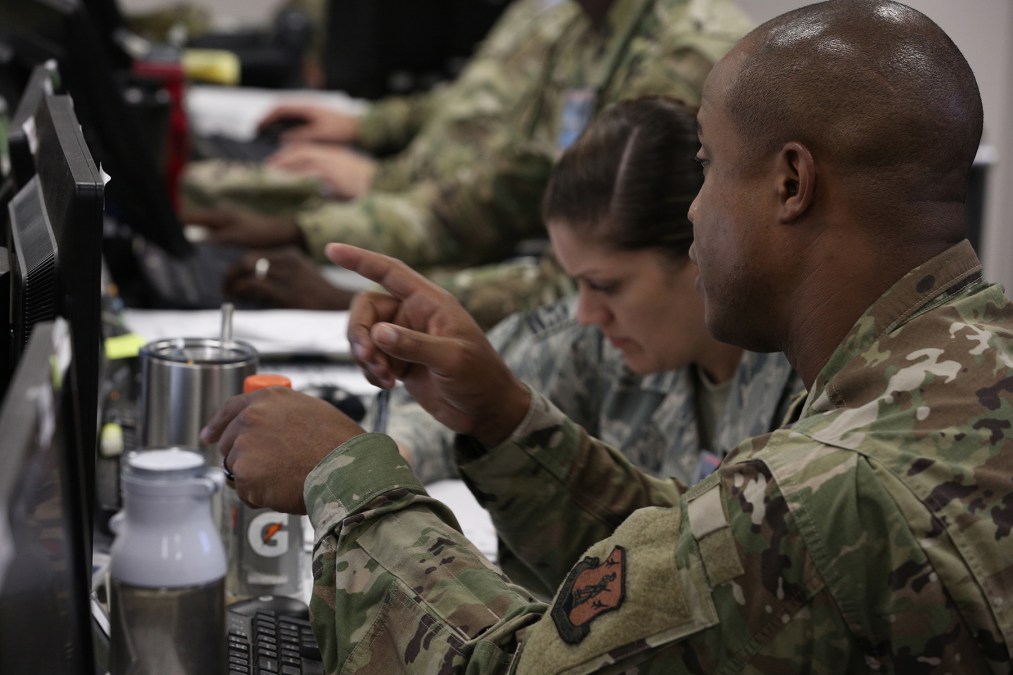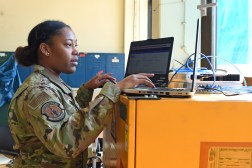12 of 14 new cyber mission force teams now established

The Department of Defense has expanded its number of cyber teams by 12, with two more slated to come online in the next few years, according to a spokesperson.
The cyber mission force began building in 2012, and the initial 133 teams reached full operational capability in 2018. In DOD’s fiscal 2022 budget request, U.S. Cyber Command proposed and was eventually approved for a phased approach to add 14 additional cyber mission force teams beyond the original 133. That request and authorization in 2021 was the first substantial effort to grow that force since it was designed almost a decade ago, long before modern and advanced threats had surfaced.
“In 2021, the Secretary of Defense directed the creation of 14 New cyber teams by September 2028. Of the 14 teams, 12 have been established. These teams are spread across Army, Air Force, and Navy Commands,” a Cybercom spokesperson said.
They declined to offer specifics regarding how many additional teams each service received or what types of teams those additional builds provided to each service — such as offensive, defensive or support teams — citing operational security.
The original 133-team cyber mission force included 41 Army teams, 40 Navy teams, 39 Air Force teams and 13 Marine Corps teams.
Those teams included 68 cyber protection teams, defensive teams focused on hunting threats on the DOD’s network; 27 combat mission teams that conduct cyber operations on behalf of combatant commands, mostly in the offensive sphere; 13 national mission teams that belong to the high-end Cyber National Mission Force, charged with defending the homeland from cyber threats; and 25 support teams that provide intelligence, mission planning and other necessary support work for combat and national mission teams.
For its part, the Space Force has noted that eventually, it plans to create a component to Cybercom, with mission analysis teams being established. However, a Space Force spokesperson said there’s no definite timeline associated with the standup of other service components, including the Space Force service component to Cybercom. The service will continue to identify requirements to meet the growing demands of combatant commanders’ space needs, they added.
The Air Force was slated to receive the bulk of the new cyber mission force teams as part of the buildup, with a total of six: two cyber protection teams, two combat mission teams and two combat support teams.
Late last year, officials noted they were ready to begin calculating the readiness for three of the new teams.
The Air Force supports cyber operations for European Command, Space Command and Strategic Command, under its Joint Force Headquarters-Cyber. Each service cyber component commander is also the commander of respective Joint Force Headquarters-Cyber organizations that provide cyber support, planning and operations to assigned combatant commands.
The Army was expected to receive four new teams, with two of them supporting the cyber mission force as of late last year.
The Army supports and conducts cyber operations for Northern Command, Africa Command and Central Command.
The Navy, for its part, was slated to receive four new teams as well: two combat mission teams and two combat support teams, according to a source.
The Navy supports and conducts cyber operations for Southern Command, Indo-Pacific Command and U.S. Forces Korea.
The Marine Corps, for its part, supports Special Operations Command and Joint Task Force-Ares, which used to be the counter-ISIS cyber mission but now is focused on nation-state activity, primarily China.
Transportation Command is supported by Joint Force Headquarters-DOD Information Network.
The Cybercom spokesperson also noted that cyber mission force teams can provide operational value before reaching full capacity as their mission elements can function during the “build-up” phase.
Those mission elements break the larger teams up into smaller portions, allowing some elements to be available for tasking and others for training and reconstitution. For example, a 68-person cyber protection team has three elements, allowing them to rotate rather than employing or deploying all personnel.
As new teams are being built, the mission elements could be in different stages, allowing a team to contribute while it’s still holistically being built.






